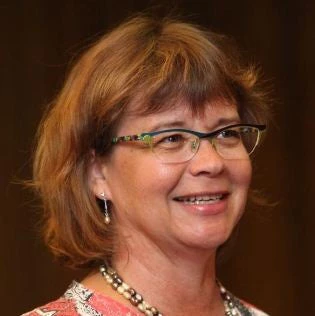 A young visitor tours the Lassen Peak summit with VR goggles. (Photo: LassenNPS / Flickr CC)
A young visitor tours the Lassen Peak summit with VR goggles. (Photo: LassenNPS / Flickr CC)
“Journey with us now to Carana, on the Eighth Continent…” In the dulcet tones of a BBC-style announcer, a documentary-style video tells the tale of a fictitious country wracked with violent conflicts. Why? To create a simulated reality for staff of development and security agencies to build skills and test approaches to combat fragility, conflict, and violence (FCV).
In your day job, you’re a Senior Poverty Economist – but in the game, you’re the Minister of Defense. In the real world, you might be a Transport Specialist – in the game, you’re wrestling with an epidemic as the Minister of Health. My business card might say World Bank Country Manager, but in the simulated land of Carana, I’m the United Nations Resident Coordinator. For eight hours spread over three days, we all focus on the same challenge: the peaceful recovery of the war-torn (imaginary) country of Carana.

(Image: Laura Bailey / World Bank)
The story of Carana and its people was originally developed in 2002-2003 by experts at the United Nations Department of Peacekeeping Operations (UN DPKO), as the foundation for scenario-based training exercises. In 2006, the World Bank’s Fragile States team picked up the story of Carana, rounding out the security-centric materials with a complex background story of economic and social dynamics, creating a richly detailed simulation game that could be used by groups ranging from 7 to 11 people to learn about and “experience” post-conflict stabilization.
The Carana simulation was a central element in the World Bank Group’s original Core Course on Fragility and Conflict for its staff around the world. It did not only embed experiential – more engaging and interactive – learning as the core pillar of the Bank’s deepening focus on staff learning on fragile and conflict situations (FCS); it also took the accumulated wisdom of then-cutting-edge analytics on FCS and built those principles into the rules of the Carana game.
Fast-forward to 2014: more than three dozen mixed teams of World Bank Group and partner staff had tried their hands at crafting a durable recovery plan for Carana. The Carana simulation had also been picked up, adapted, and carried forward into peacebuilding contexts with innovations sponsored by the European Union, Canada, and Norway. Inspiring adaptations took shape to focus on humanitarian crises and natural disasters in FCV settings and to train medical students.
While the World Bank’s use of simulations for staff FCV training waned around 2014, a small but growing niche area of academic scholarship continued to focus on the value of games and simulations in learning about real-world political and peacebuilding challenges. Recent entrants include games that focus on interpersonal violence or urban conflict.
Enter mobile technology, with a deceptively simple proposition by a gaming studio called Ndemic Creations: make commercially successful games about wicked world problems – such as contagious disease and war – that can be played on your smartphone or tablet. If the game is good enough, players around the world – as many as millions of them – can learn how to solve pressing development challenges while they’re busy having fun. The U.S. Centers for Disease Control were so interested in Ndemic’s first game Plague Inc. that they invited Ndemic founder and lead designer James Vaughn to chat with their scientists.
In May 2019, at the annual Stockholm Forum on Peace and Development, I moderated a deluge of questions from a packed room in a conversation with James about Rebel Inc., a simulation game launched in December 2018 that is engaging over four million players worldwide on the issue of post-conflict stabilization. Check out some of the game screenshots shown here to get a flavor of how the complex challenges of peacebuilding and recovery are featured in a game scenario.
Interest remains high in how mobile and tablet technology can be used to adapt and transform – not only how international development agency staff understand and approach complex FCV situations, but how we can create opportunities to work with diverse stakeholders in developing countries in a simulation, which could open up new ideas for peacebuilding and recovery. Keep your eyes and ears open, for a new Carana-like world… there just might be an app for that!
This blog post is part of a blog series introducing topics “On the Frontiers of Peace: Innovating for Resilience.” The series covers emerging and innovative activities in the global scope of Sustainable Development Goal 16, which seeks to build “peaceful just and inclusive societies.” Leave a comment below or share your thoughts on social media using #Innovate4Peace.
READ MORE:
- Read the transcript of the Stockholm Forum interview
- Subscribe to our Sustainable Communities newsletter
- Follow @WBG_Cities on Twitter



Join the Conversation